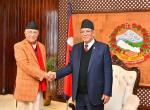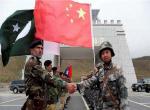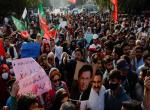President Obama, while agreeing to the ‘surge’ as suggested by General Stanley A. McCrystal announced in 2009 that US Army will start pulling out of Afghanistan after July 2011. This has resulted in a suspected loss of morale of the US Army and other NATO allies as also the Afghan Government and National Army. Given the home situation in USA, politically it will be very difficult for The President to reverse the order. Other members of International Security Assistance Force ( ISAF ) would, if anything, be too happy to even precede the US Forces. In such a scenario the country coming again under control of Taliban, though not a certainty, is very likely. It gets reinforced further with Pakistan siding with the Afghan Taliban and virtually abdicating the Federally Administered Tribal Areas, inter alia adjoining areas of North West Frontier Province and Baluchistan to Taliban and their mentor Al Qaeda by a series of agreements. The concerns of the surrounding nations would be well worth pondering.
First, the Central Asian Republics (CAR). The five countries comprising the CARs are Turkmenistan, Uzbekistan, Tajikistan, Kyrgyz and Kazakhstan. Turkmenistan during the short regime of Taliban in Afghanistan had accepted the situation and was happy to do business with Taliban. So, I presume they would not be unduly concerned unless the present ruling regime fears being toppled by an Islamic Surge, which is a strong possibility, if one looks at the history of the region. History has a habit of revisiting her old playgrounds. Uzbekistan has been affected by a fairly strong movement of Islamic Extremism in the shape of Islamic Movement of Uzbekistan (IMU), the origin being the fertile valley of Farghana in the South Eastern part of Uzbekistan. Tajikistan and Kyrgyz Republic, both politically fragile, are equally susceptible to an Islamic Extremist movement to destabilise them. Any Islamic movement presently does not affect Kazakhstan, the richest of them all, floating on oil and gas and enjoying a growth rate of 10% plus of GDP, but the Government is concerned of the domino effect of such a movement in the Southern neighbours. The unproven but educated estimate of hydrocarbon reserves in the whole region of CAR is supposedly next to Saudi Arabia. Hence the concern of Russia, China and no less, India and the West.
Iran has a deep sense of contempt for Taliban, indeed the Pashtuns are generally looked down upon in Iran, whereas Tajiks and Uzbeks are acceptable. Dari which is a derivative of Farsi is spoken and understood by many Afghans particularly the Tajiks and even a large segment of Uzbeks. The only pure Shiaite tribe in Afghanistan, The Hazaras are close to Shia Iran at least emotionally and spiritually.. An unstable and extremist Sunni regime like that of Taliban can be a constant source of concern for Iran. One would recall that Iran almost went to war with Taliban, when Taliban in Mazar E Sharif in1999 butchered a number of Iranian diplomats.
Russia has been bleeding in Chechnya for a long time with Dagestan likely to follow suit. A Taliban Rule in Afghanistan will give a boost to the insurgency in Chechnya. Besides, Russia has a strong influence in all the countries of CAR whose destabilisation will directly affect Russian strategic interests. Turkey too which lately is seeing a revival of hardline Muslims will be concerned of the outcome. Let us now look at China. North Western China is the province of Sinkiang, also referred to as Eastern Turkoman region, whose ethnic population is known as the Uighur Muslims. Due to continuous exploitation of the area by Beijing and intensive efforts to settle large Han (mainland Chinese) population in and around the capitol city of Urumchi, there is unrest and violence amongst the Uighur Muslims. In fact a number of members of Al Qaida are from Uighur stock. If Afghanistan was to go the Taliban way, it is only a matter of time before the incipient Uighur movement gains strength. Finally, the Western countries led by the USA are likely to feel the heat of Islamic terror most if Taliban and Al Qaeda were to return to Afghanistan. Tony Blair was right when he had said that the history of the world is being played out in the rocky wastes of Afghanistan.
Now to Indian concerns. First stems from the Chanakya thesis that an adversary’s neighbour must be a friend of yours. A friendly Afghanistan is an imperative for us. India has to have access to the energy sources as well as the growing market of Central Asia. A Taliban Afghanistan and an extremist bunch of CAR nations are likely to be inimical to Indian strategic interests. So what are the options for India?
First and foremost is to have strong ties with the present democratic regime of Afghanistan and make all efforts to strengthen it along with other countries who seek stability in the region. In this effort we must be seen clearly to have an even handed approach to Pashtuns and other groups to dispel any suspicion of a tilt towards the erstwhile Northern Alliance. It may be recalled that during the civil war in Afghanistan, Taliban backed by Pakistan was fighting aginst a loose alliance of Tajiks, Uzbeks and Hazaras referred to often as The Northern Alliance, which incidentally had the support of Russia, Iran and India.
However, before discussing the other options let us have a quick look at the political and ethnic geography of Afghanistan. The estimated population of Afghanistan is about 25 Million. The Pashtun is the largest ethnic group of 42 percent of the population. Next are the Tajiks comprising 24 percent, followed by Uzbeks and related Turkmen people at 18 percent and Hazaras at about 6 to 8 percent. Remainder are smaller groups of Baluchis Kirgis, Almak, Nooristanis etc. Pashtuns ( Taliban are from Pashtun tribes ) are chiefly based in South and East of the country with an isolated but significant pocket in the province of Konduz in the North, where the founder of the first political entity of Afghanistan Emir Dost Mohammed settled them in mid 19th Century. Pashtuns are also scattered all over the country but in small numbers. Tajiks generally are in and around Kabul and the North-eastern parts. Uzbeks reside in the North and Northwest while the Hazaras are mainly concentrated in the central province of Bamyan. During the Taliban rule all the non Pashtun groups were persecuted in some form or other, the worst sufferers being the Hazaras who besides having distinctly mongoloid features are Shia Muslims who the Talibans consider as bad as Kafirs (non believers) . The mountain range of The Hindukoosh geographically divides the country in North-South
.
A civil war had ensued in early 90’s between the earlier mentioned Northern Alliance and The Talibans which were very openly supported by Pakistan The Taliban routed the Northern Alliance from most of the areas and ruled Afghanistan from 1997 till 2001. Then Happened 9/11 and US Forces attacked Afghanistan in November 2001. The ground offensive towards Kabul was spearheaded by the Northern Alliance. All this and for other historical reasons there is a strong antipathy between Taliban and the other minority groups who put together are a larger group than the Pashtuns.
Thus there is the need to plan for contingencies for the possibilities of the present regime being toppled after the pull out of bulk of US Forces. In this scenario we can have an option of making friendly overtures to Taliban but it is unlikely to succeed for many reasons, chief of which is the strong alliance of Pakistan with the former, and the extreme religious and social views of Taliban.. Next is to have a plan for reviving the Northern Alliance comprising the Tajiks, Uzbeks, Hazaras and some other disgruntled groups who have suffered at the hands of Taliban, and there are many. This can only succeed if Iran and Russia join hands together with India and the CAR countries. The last Alliance suffered from many drawbacks, mainly lack of mutual trust and working in tight compartments. It also worked to a great extent because it was led by the legendary Guerrilla general Ahmed Shah Masood, a Tajik, who was assassinated two days prior to 9/11 by the Al Qaeda / Taliban. The differences need to be understood and accepted and will need to be ironed out in the contingencies. This would lead inevitably to another civil war in Afghanistan, which would be the price to pay if total Talibanisation of Afghanistan is to be prevented. Of course USA will have to be on board for the contingency to succeed because even after the withdrawal of most of US Forces a sizeable number would still be in Afghanistan. China while making appropriate noises may not be too averse to the idea..
Mr Robert Blackwill, who was the US Ambassador to India some years back and later Deputy National Security Advisor to Government of USA, has been quite vocal in suggesting division of Afghanistan in a North- South divide. A civil war leading to a division of Afghanistan can have many possibilities, all of which need to be greatly discussed and analysed. One strong fallout will be the demand by Taliban to merge the Pashtun areas of Pakistan viz The Federally Administered Tribal Areas and parts of Northwest Frontier Province recently named Pakhtunkhwa Khyber, a presient name perhaps! The Durand Line dividing Pakistan and Afghanistan has never been accepted formally by any Afghan Government including the Taliban. This may eventually lead to fragmentation of Pakistan with all its follow up consequences. The threat which may loom large for Pakistan could perhaps act as leverage for India! In any case the author is of the firm view that a stable Pakistan in short and mid term is not in India’s strategic interest. The idea is not new but not often articulated. It is time South Block, with both its military wing and The Ministry of External Affairs with the National Security Adviser in the lead put their heads together unless it has been done already.
THE GREAT GAME MUST GO ON>
--------------------------------------------
Published Date : September 17, 2010








Post new comment